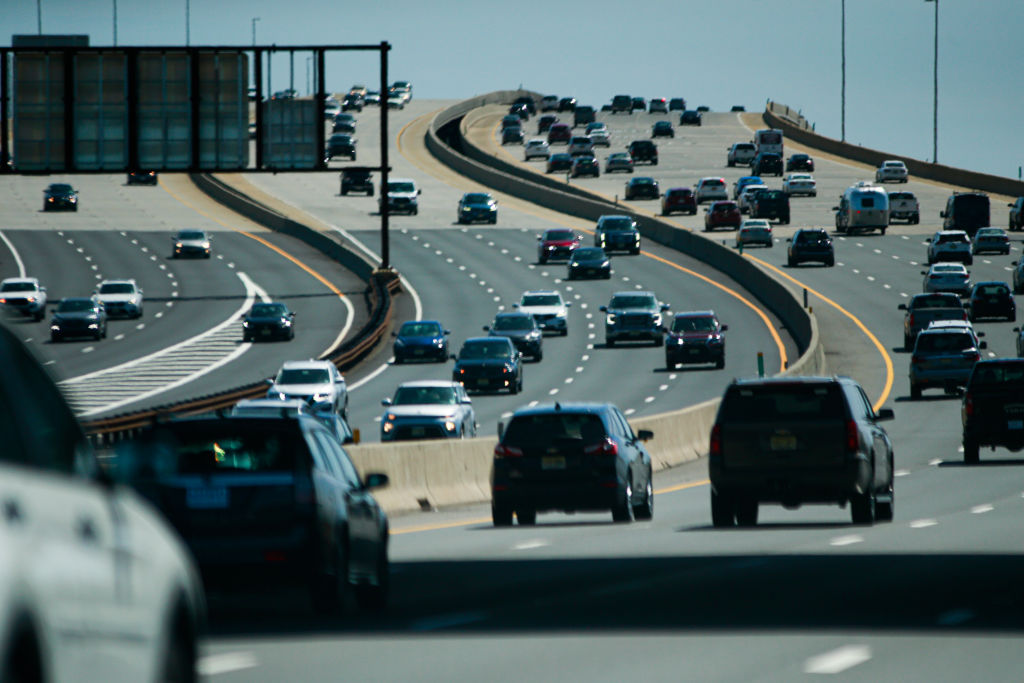
The Biden Administration and the American automobile industry seemed to be in raptures with one another back in 2021. “We’ve just got to step up—government, industry, labor working together,” President Joe Biden said that August, on the White House lawn, speaking on the need to decarbonize the industry. “We have a playbook, and it’s going to work.” The CEOs of the big three American automakers, Ford, Stellantis, and GM, looked on, each still glowing from a personal presidential shout out earlier in the address. Then they gathered around as Biden signed an executive order inaugurating a new target for zero emission electric vehicles (EVs) to comprise half of all new car sales by 2030.
That relationship may be getting more rocky. Today, the U.S. EPA unveiled tough new automobile tailpipe pollution limits in a new proposed rule. The rule does not prescribe a technological fix, but the agency says that, in order to comply, automakers may end up having to sell two EVs for every gasoline automobile by 2032. That will put the U.S. transportation sector—the nation’s largest source of greenhouse gas pollution—on a more ambitious decarbonization trajectory than Biden pledged in 2021. The public comment period for the proposed rule runs for the next 60 days, with a final rule likely to be promulgated early next year. Today’s announcement comes less than two weeks after the Treasury Department released its guidance for companies on how to comply with the Inflation Reduction Act’s (IRA) EV tax credit regulations.
The response from the auto industry has been, not unexpectedly, tepid. “EPA’s proposed emissions plan is aggressive by any measure. By that I mean it sets automotive electrification goals in the next few years that are… very high,” writes John Bozzella, the CEO of the Alliance for Automotive Innovation (AAI), an industry group, in a press release. “To be clear, 50 percent [EV sales] was always a stretch goal.” AAI’s membership includes Ford, GM, and Stellantis, along with others like Volkswagen, Mercedes, and Toyota.
Bozzella says that automakers are committed to electrification, but that challenges to building out charging infrastructure and industry supply chains, and gaps in critical mineral supply could hold things back. The industry also doesn’t like that they’ll be forced into electrification via emissions standards, which they say will require them to waste money making their gasoline vehicles more efficient in order to comply, rather than putting those dollars toward EVs.
Greg Smithies, partner at venture capital firm Fifth Wall, which has invested in EV infrastructure, says a lot of the automakers’ concerns are fairly manageable. “It behooves the industry to push back on any regulations in general,” he says.
Despite automakers’ skepticism, it bears noting that even the EPA’s tough new emissions rules likely aren’t tough enough to stay in line with the Paris Agreement’s goal of keeping global temperature rise below 2°C of warming above pre-industrial levels. An analysis by the International Council on Clean Transportation says that 75% of new car sales would have to be EVs by 2030 to stay in line with that temperature trajectory. “This is Biden’s chance to take the biggest single step of any nation to confront the climate crisis, but the EPA’s proposal stalls out when it comes to new gas-guzzlers,” said Dan Becker, director of the Center for Biological Diversity’s transportation campaign. “Biden shouldn’t let automakers’ can’t-do attitude sabotage his best shot at cutting carbon emissions.”
Ingrid Malmgren, policy director at electrification advocacy nonprofit Plug In America, says the new rules aren’t even that big of a lift from prior targets. The main difference, she says, is that the rules extend decarbonization trajectories out further into the future And she notes that the Biden Administration has provided a lot of support to automakers, from tax incentives for EV sales to rollouts of government-funded charging infrastructure. Notably, the EV tax incentives under the IRA weren’t a blank check for the auto industry—they’ll have to invest in domestic battery supply chains for their cars to qualify—but those requirements are a lot looser than they could have been under the text of last summer’s climate law.
“It’s not that they’re just running around carrying a stick,” Malmgren says. “They’re also giving tons of carrots to manufacturers.”
More Must-Reads from TIME
- Cybersecurity Experts Are Sounding the Alarm on DOGE
- Meet the 2025 Women of the Year
- The Harsh Truth About Disability Inclusion
- Why Do More Young Adults Have Cancer?
- Colman Domingo Leads With Radical Love
- How to Get Better at Doing Things Alone
- Michelle Zauner Stares Down the Darkness
Write to Alejandro de la Garza at alejandro.delagarza@time.com